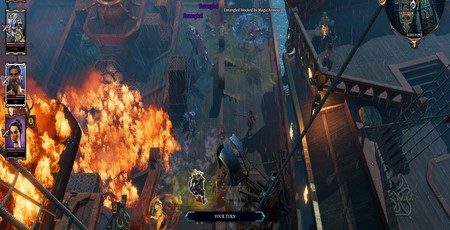
It's nearly Christmas! Don't worry if you didn't get us anything.
Christmas brings with it minced pies, Shrek on the telly, and, with a bit of luck, 10 glorious days to play games. It also brings the end of the year, and so it's that time again for us to give you the greatest Christmas gift of all: 11 of the finest games from this year for you to pick up in Steam's Christmas sale or in some January or Boxing Day sale that someone has cooked up to bleed you of all your cash.
No more introductions - on with the games!
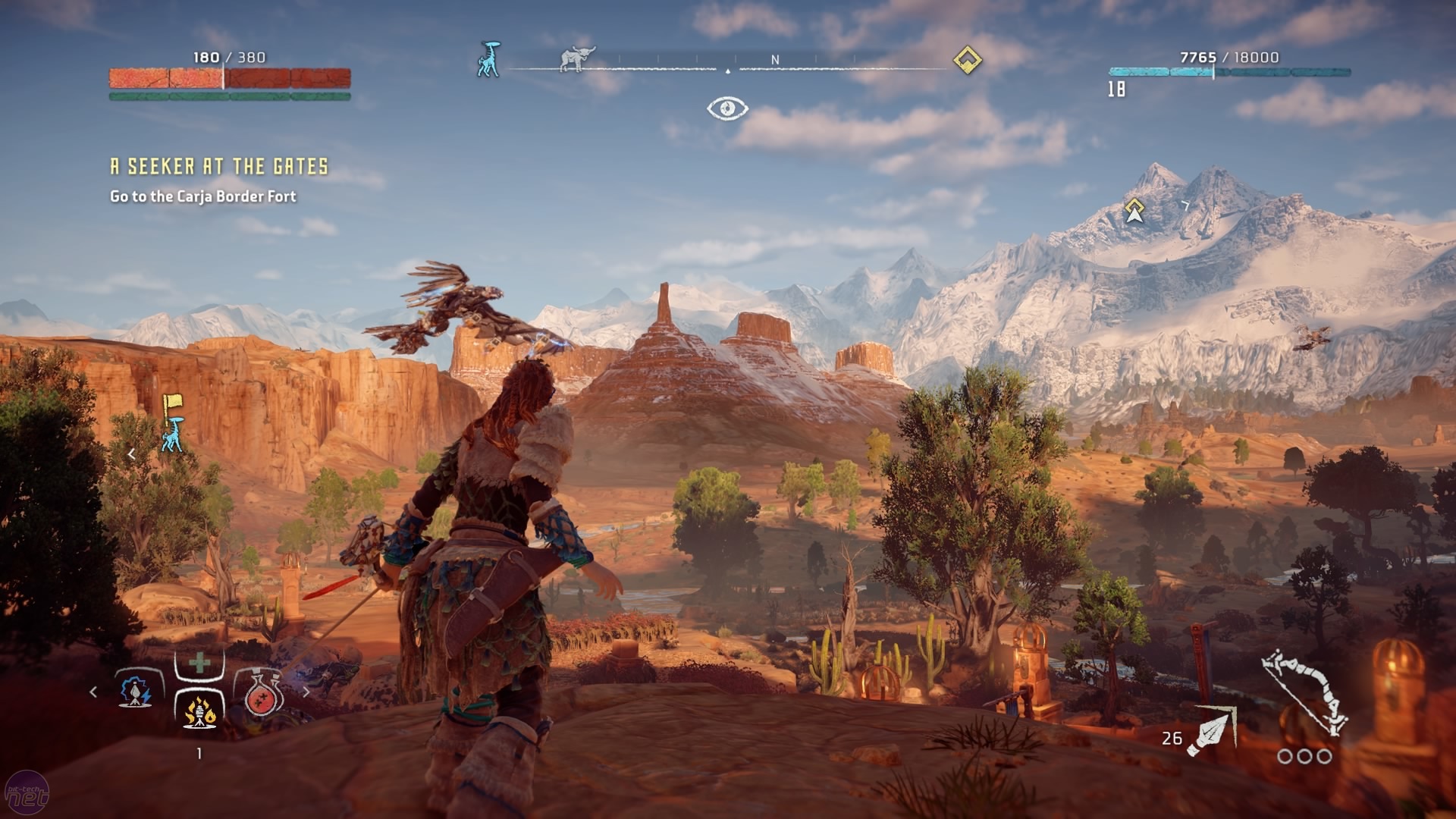
11. Horizon: Zero Dawn
Jake: Horizon sounds like a game an imaginative eight-year-old came up with, with an orphaned tribal warrior fighting robotic dinosaurs with fancy gadgets and a bow and arrow. In Guerilla's favour though, it lent so heavily into the idea that not only does the tribe that Aloy hails from feel real, but the ridiculous post-apocalyptic world and its technological mish-mash of tribes and, again, robot dinosaurs feels believable too.
Horizon: Zero Dawn is a vibrant adventure, and while Monster Hunter and The Legend of Zelda: Breath of the Wild are too — the latter released just a few days after Horizon, even — neither of them quite capture the thrill of the hunt in the same way Horizon does. In a year filled with interesting games, Horizon made a name for itself for strong world building and an incredible aesthetic. There are flaws, and launching within a few days of the best adventure game to come out in years didn't help it, but this is one of the best game's released in the last year, and you had better believe Sony have the Guerilla team chained to their desks working on a follow up.
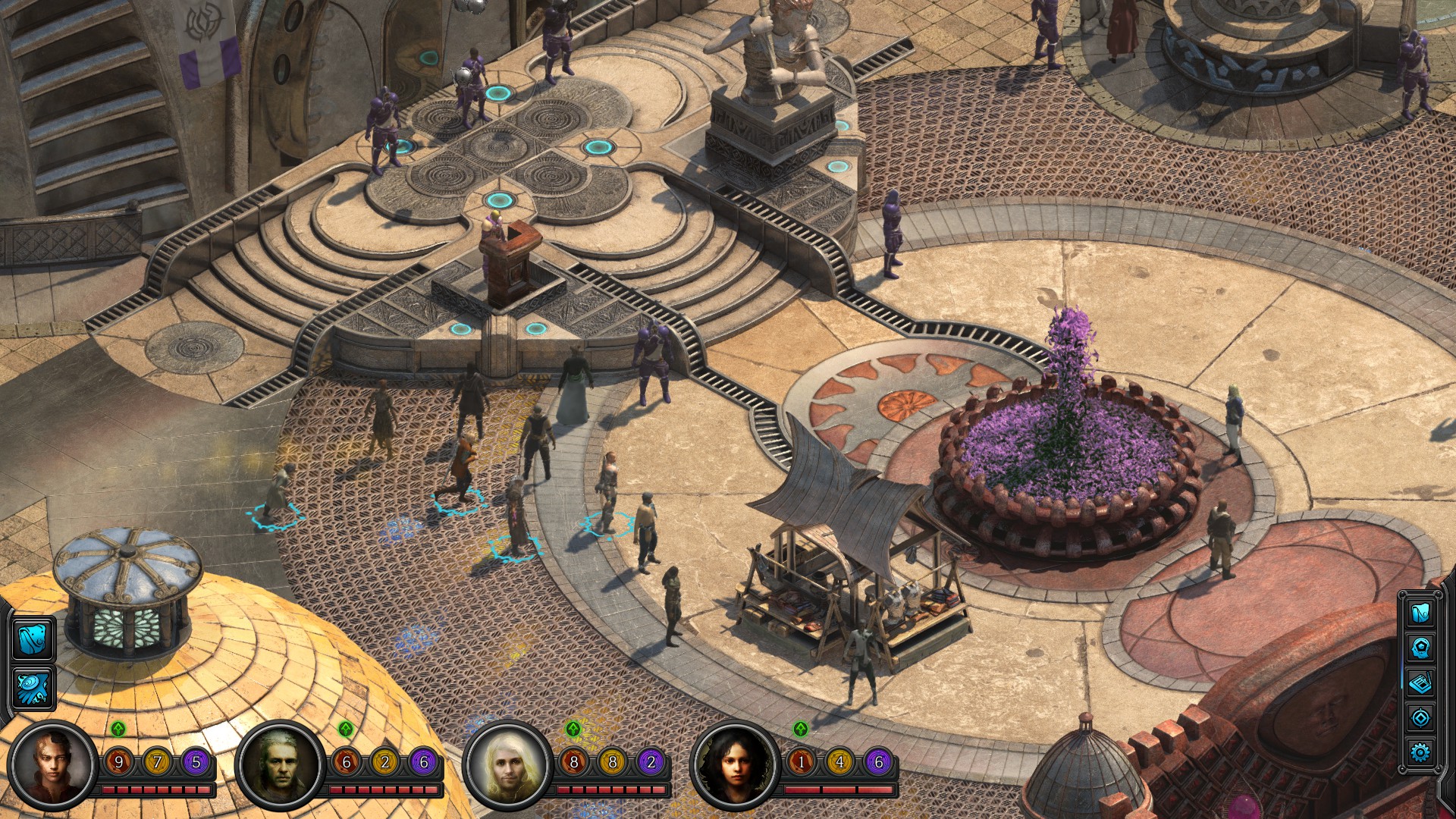
10. Torment: Tides of Numenera
Rick: Making a pseudo-sequel to one of the strangest games on the PC is no mean feat. When your audience is expecting weird, as anyone who is a fan of Planescape: Torment would, then your only option is to be weird in a different way, which of course risks upsetting your fans.
Fortunately, Tides of Numenera succeeds in this difficult task with considerable flourish. Its world - built atop the fragments of dozens of dead civilisations - is a fantastic and nigh-seamless blend of fantasy and sci-fi, embodying Arthur C. Clarke's famous maxim about technology and magic. It's a world where you'll encounter characters who exist in multiple dimensions at once, where you'll explore cities built inside the guts of a giant, fleshy organism made mostly of mouths. Indeed, one of Numenera's greatest tricks is how it convinces the player of this ridiculous world.
Importantly, however, the game that you play is just as layered as the fiction that InXile Entertainment presents. Numenera's dialogue and questing systems are some of the best you'll find in a modern RPG. Each quest is wildly inventive and has myriad ways of solving it, each affecting the world around you in a different way. Meanwhile, almost every location, person, and object you stumble upon has some interesting mystery for you to unpick. Even the junk you collect on your travels can yield entirely new quests if you look closely enough.
It's a shame that the combat system is so terrible, otherwise Tides of Numenera would probably be higher up this list. Nonetheless, it is a deep, multifaceted, and suitably bizarre successor to one of the PC's most cherished RPGs.
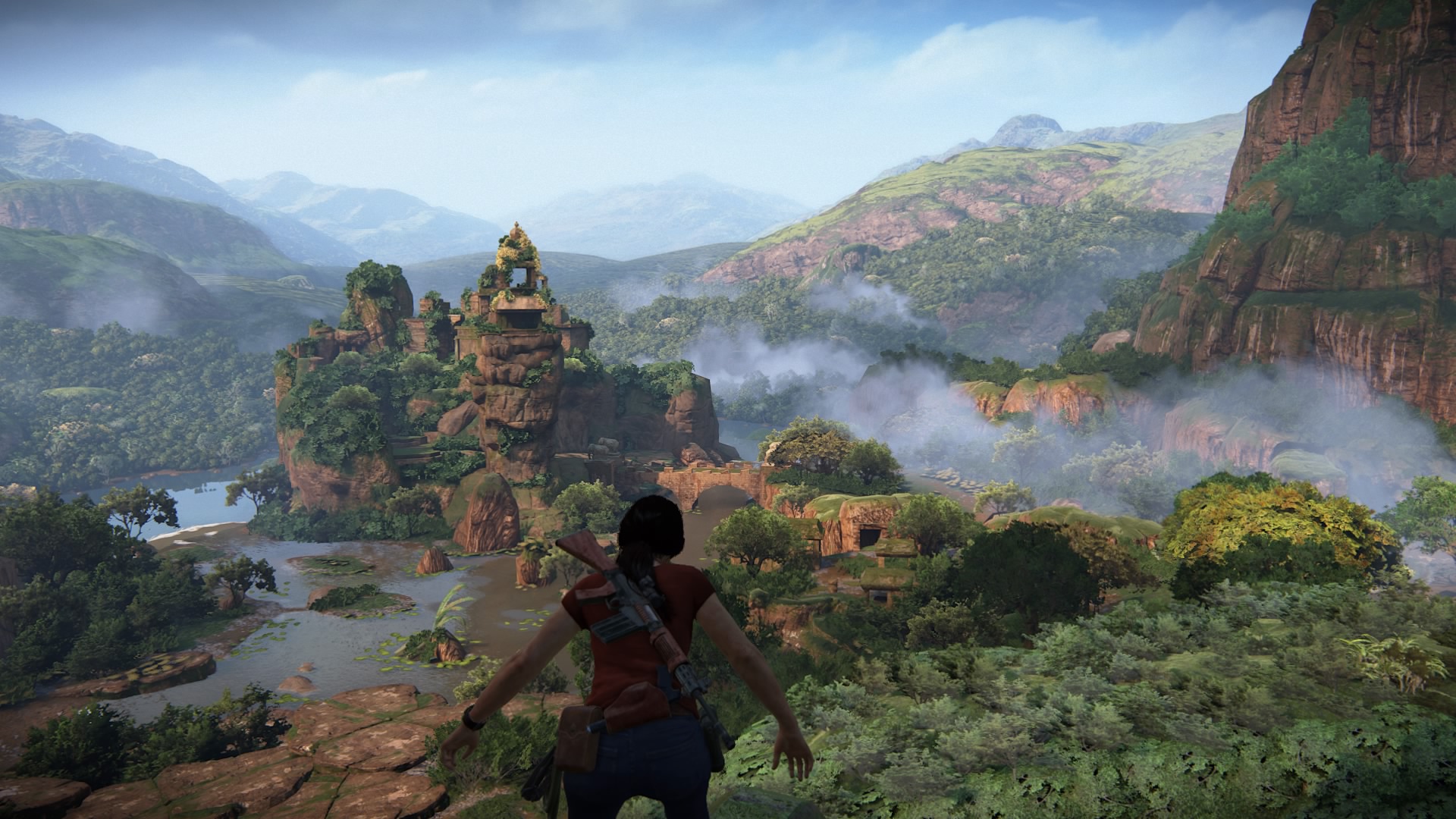
9. Uncharted: The Lost Legacy
Rick: I expected Naughty Dog's standalone expansion to be an enjoyable romp, but I didn't expect it to be quite as substantial and significant as it ultimately proved to be. The Lost Legacy is effectively Uncharted 4.5, an adventure that was not only fully deserving of its standalone status but one that actually manages to improve upon Uncharted 4 in multiple ways.
New concepts that were originally introduced in Uncharted 4, like proper stealth and open-world sections, have been refined and improved in The Lost Legacy. The expansion also arguably benefits from the shorter length, trimming some of the flab that was beginning to show around Nathan Drake's waistline. What results is a sharper and more exhilarating experience, high on action and low on filler.
The Lost Legacy also doesn't suffer from the absence of the series' leading man. Chloe Frazer proves more than capable of filling Drake's substantial shoes, and The Lost Legacy's more light-hearted adventure (in which you seek the Tusk of Ganesh deep in the Indian jungle) is a welcome return to the pulpy and more carefree tone of the earlier Uncharted games. The pairing of Chloe with the ex-PMC leader Nadine - who was essentially the villain of Uncharted 4 – is a slightly odd choice that doesn't entirely succeed. But Naughty Dog just about manages to force the relationship to fit.
There are times when The Lost Legacy relies too much on the best bits of previous games, particularly towards its conclusion. But the fact that I'm judging it alongside the numbered entries in the series demonstrates what a sterling job Naughty Dog did with this spinoff.

8. Prey
Rick: I often wonder whether Prey would have been better received if it had a less confusing name. Why Arkane (or Bethesda) opted to attach the name of a half-decent shooter from ten years ago to this sublime game is beyond me. Prey has nothing to do with Human Head's alien blaster. Instead, it's Arkane's loving and cerebral homage to System Shock, and it is genuinely excellent.
Arkane's sci-fi immersive sees players exploring the gigantic, nightmare puzzle-box that is the Talos 1 space-station, searching for supplies, battling spectral alien enemies, and generally trying to work out what on Earth (or, indeed, off it) is going on. The story is an impressively Shock-ish tale that combines alternate history with psychological horror and a playful twist on the amnesiac protagonist. Its inspirations range from Poltergeist to The Shining to, weirdly, Groundhog Day.
The best thing about Prey, however, is how you can create your own keys to slowly unlock the space-station's secrets. Weapons like the Gloo Gun and the Mimic ability – which lets you assume the form of any object in the world – enable players to conjure their own solutions to environmental problems and deploy unique tactics against the ghostly aliens you fight. What's more, virtually every object in the game is made useful to you thanks to one of the most satisfying crafting systems ever devised. Special mention goes to the recycling grenades, which turn anything they “explode” nearby into useful components, including enemies.
Prey doesn't quite match Arkane's finest work in Dishonored. It's a little too cold and calculating for its own good, and the difficulty curve is quite steep. But it more than makes up for these flaws through its splendid environment design, intellectual storytelling, and delightfully creative problem-solving.

7. Super Mario Odyssey
Jake: If The Legend of Zelda: Breath of the Wild was Nintendo reinventing the wheel, Super Mario Odyssey is its way of showing you the wheel was pretty great to begin with.
Mario Odyssey is bright, nostalgic, friendly, and smart without moving too far away from what makes Mario Mario. Odyssey is also bursting with new ideas and funny quirks that the developers are desperate for you to enjoy. In a single level you can experience a brief platforming section that feels like it's straight out of a 2D 90s Mario game, fly a rocket to a planet made of rotating houses you have to jump between, and control an Easter Island head to try and see invisible platforms.
Odyssey is the best game on this list to give to children, but any adult looking at the vibrant colours and writing it off as a kids' game would miss out on an experience that is just sheer joy. Few games get to be quite as lovely as this and pay off your time investment in such a rewarding way.

6. Injustice 2
Jake: You might think NetherRealm Studios' superheroic fighting game is a sideshow, but Injustice 2 is a complex and compelling fighting game that has a generous helping of single-player content that just happens to feature some of DC's finest
Injustice 2 has several strengths, but the best is its world. The game's lore centres on an isolated branch of the DC Universe where Superman is a bit of a knob and has decided that whole 'no killing' thing isn't for him. This is the story in the original Injustice, and here in Injustice 2 we see the effects of this split as Supergirl arrives on Earth and both factions try to curry her favour.
It's a fun world, and once you're done with the main story there's a whole multiverse of alternate punch-ups to take part in. It's a game that embraces the ridiculousness of the comics universe and uses it to make something fun.
The fighting is decent, and while some characters definitely came out of the gate a little too strong, tweaks and the addition of several new characters — a mix of DC and pop culture favourites that has seen Sub Zero step into the ring to face off against the Teenage Mutant Ninja Turtles — have kept things interesting.
The title's gear system too, gives you a way to customise your heroes to suit your needs, while the multiplayer also gives you a chance to get rid of that for pure one-on-one fights, if you're that way inclined. The fighting game is making a return to prominence, and titles like this are key for lighting the way for new fans of the genre.
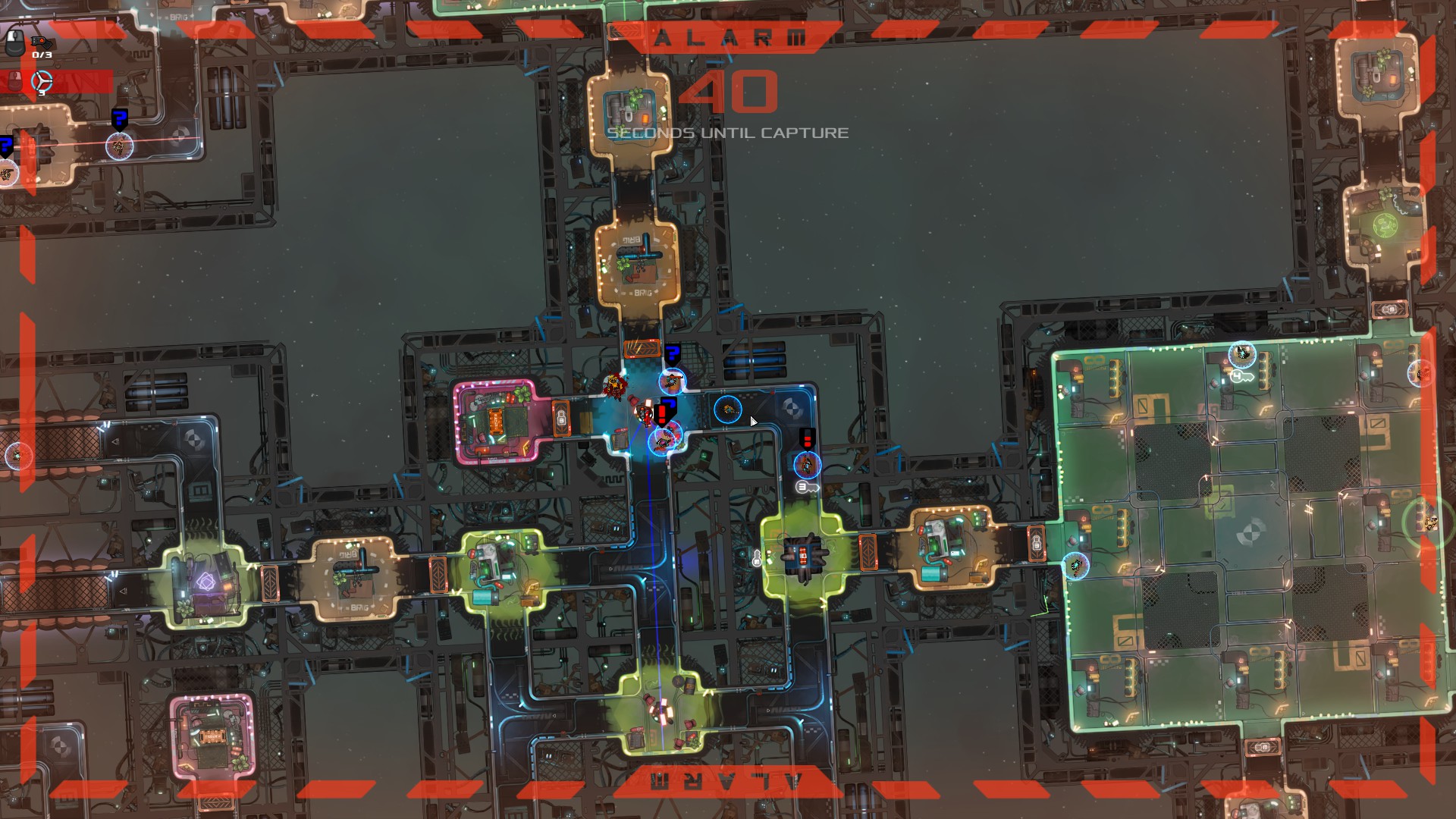
5. Heat Signature
Jake: Heat Signature may not be the best space game I've ever played, but it's the one that best captures the feel of playing the pop culture space-rogue: the guy with the wisecracks and the blaster. The trope is everywhere: Mal Reynolds, Han Solo, Peter Quill…
Heat Signature is designed to let you emulate your space heroes, and it's a rewarding sandbox to explore. Want to sneak onto an enemy ship with a wrench and incapacitate the crew before flying the ship back to base? You can do that. Want to toss the prisoner you're rescuing through a plate glass window into space and pick them up with your escape pod using remote control? No problems.
The mechanics are fairly simple, and pootling around space doing missions you pick up in dingy bars should feel stale fairly quickly, but it's the strength of the writing — often genuinely funny — and the game's mechanics that keep the game consistently interesting. This is engaging in the same way as the original Elite, but with the option to propel yourself through space to attack an enemy vessel on foot, firing a shotgun over your shoulder for propulsion. Heat Signature is superlative and a game you might have missed in the roar of 2017's AAA releases. Rectify that.
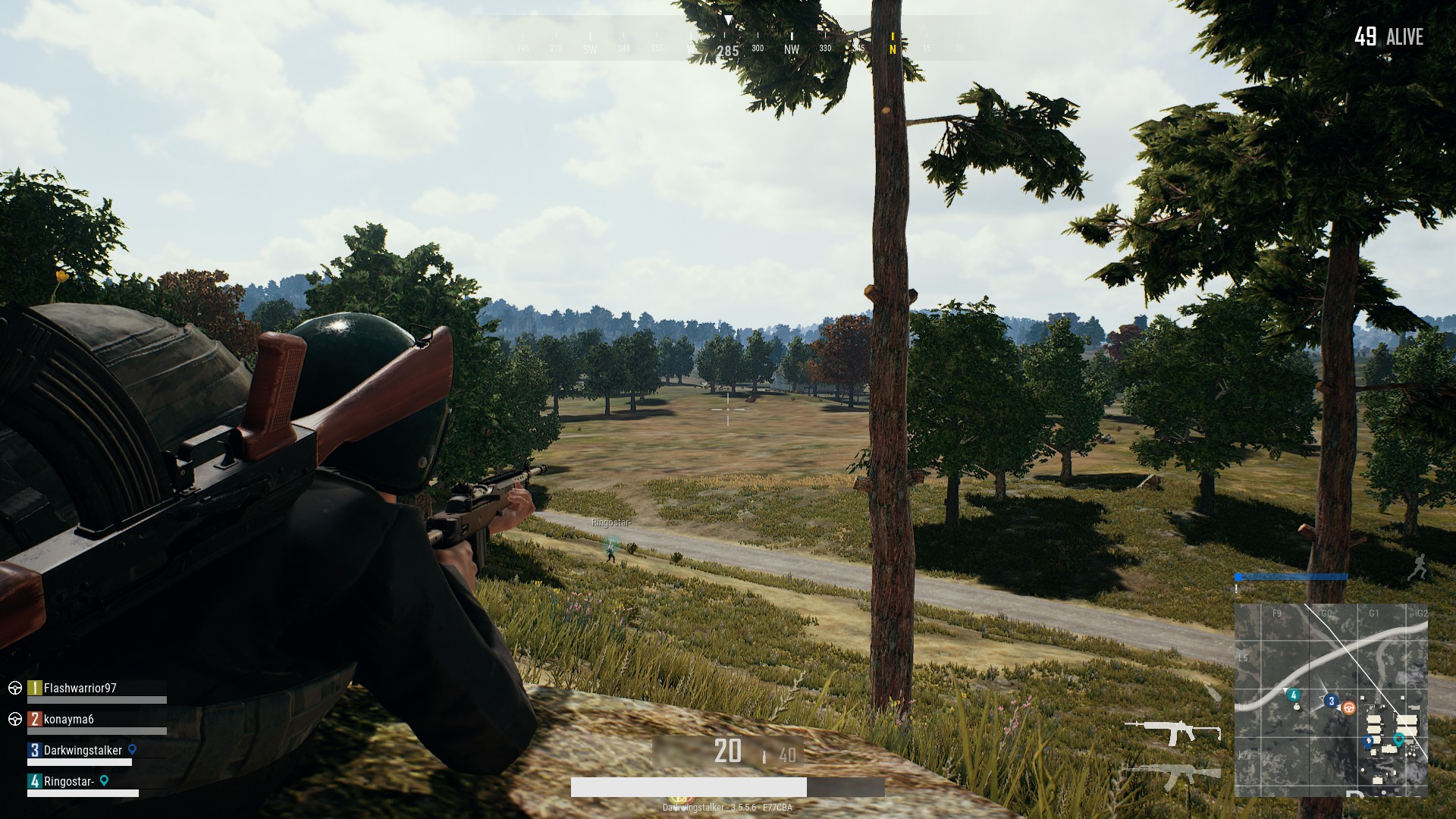
4: PlayerUnknown's Battlegrounds
Jake: 2017 has been Battlegrounds' year. Emerging into Steam's Early Access program in March, every step of development has been met with interest from press and players.
Battlegrounds has, according to SteamSpy, over 25 million owners already, and it only launched on December 20th. This success isn't just the mammoth buzz generated by the press but a testament to how well the game works as a method of generating stories. Playing solo, PUBG is a survival-horror game. In a duo, it's a hike through the woods with friends and sporadic gunfire. As a group of four, it's the finest small unit firefight simulator I've ever played — including titles like Arma — but each of these modes shares the same magic quality that creates anecdote after anecdote every time you play.
Battlegrounds isn't flawless, but it doesn't need to be. By dropping 100 players into one location and having them fight to the death, you're letting players create their own fun. Sometimes, that fun involves executing a perfect ambush on an enemy squad. Sometimes it involves driving through the woods on a motorbike, flipping it and killing yourself and your passenger instantly at 100mph.
Battlegrounds is here to stay, and with a couple million playing it at any given moment, the quality speaks for itself.

3: The Legend of Zelda: Breath of the Wild
Jake: In an incredible year for Nintendo, Breath of the Wild is perhaps its most impressive success. The game takes the core experience of Zelda - dashing around as Link, twatting Ganon, and rescuing princess Zelda - and drops that into a systems-heavy, open-world RPG.
BotW is one of the best games Nintendo has released in a decade and also one of the better open-world games I've ever played. By giving you a full selection of powers early on, the ability to climb nearly everything, and near limitless potential to interact with the world around you, the Hyrule of BotW feels like a real place with real consequences for your actions.
The game rewards creative thinking, and the developers seem to have thought of anything. When crossing a desert in the game that's so hot you lose health in direct sunlight, the obvious answer is to change into cooler clothes to keep your temperature down. You can also cook a cooling meal to give you more heat resistance, or stick to the shade. I carried a boulder across the desert, the boulder held aloft over my head providing a portable spot of shade to let me get across.
Every puzzle in the game has the same sort of subtleties. Breath of the Wild is, in a word, sublime, and we're going to be feeling the ripples from the game in design for the next twenty years.
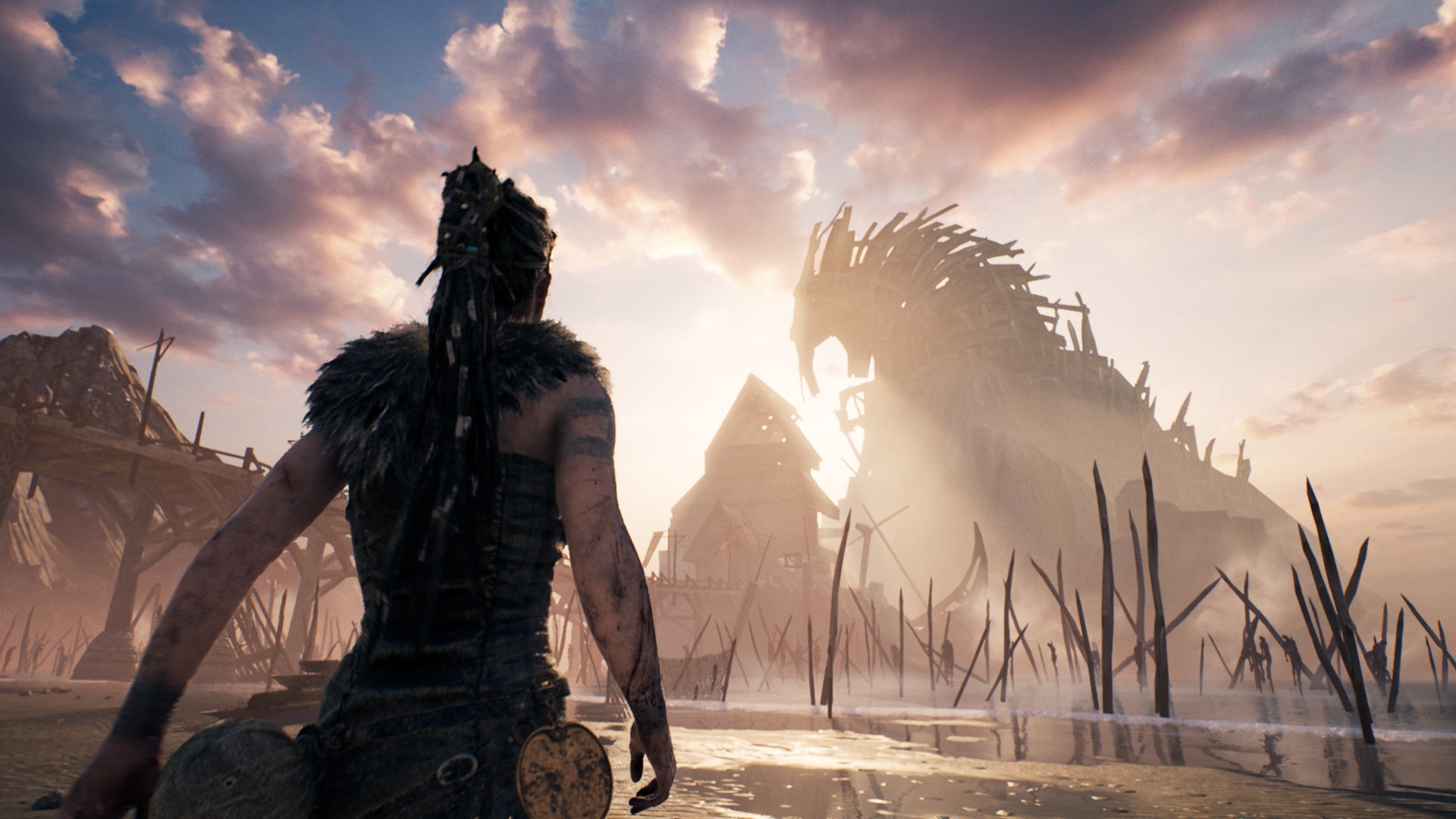
2. Hellblade: Senua's Sacrifice
Rick: Of all the games I played this year, Hellblade was the most surprising. Prior to its release, there had been considerable talk about its alleged depictions of psychosis, along with concern about gaming's historical lack of tact when dealing with sensitive subjects. But I wasn't prepared for just how committed Ninja Theory were to its idea, how it bakes the concept into every facet of the game's design.
Hellblade has you assume the role of a Celtic warrior who embarks upon a dangerous personal quest to save her lost lover from the Viking equivalent of Hell. Senua's psychosis means she is troubled by hallucinations, such as voices in her ears and strange visions before her eyes. But Hellblade is far more than a grotesque fireworks display of mental illness. It uses both its mechanics and its own myth to lead the player to question everything they see.
The combat sees you battling hulking monsters who form from thin air, striking Senua with bone-crunching attacks. The puzzles take the form of optical illusions, forming bridges and doors out of shapes that hang in the air. Even the world you explore is a shifting amalgam of ancient legends and Senua's own traumatic memories.What soon becomes apparent is that everything you see, everything you do, is potentially no more than a figment of Senua's unchained imagination, a symptom of her illness. It becomes clear that there is no safe harbour for Senua's peace of mind, no way to determine what is real and what is not.
When you realise how deep this rabbit hole goes, it's a startling and quite disturbing sensation.
As an action-adventure, Hellblade is decent but not spectacular. The combat is good but not great, and the world is only minimally interactive - the price of Ninja Theory's design focus. It's also not a particularly pleasant experience. Some sections of the game are extremely vivid and psychologically upsetting. But as a piece of character-driven storytelling, as a work of art, Hellblade is hands down one of the best games of this year.

1. Divinity: Original Sin II
Rick: 2017 has seen several games that encourage you to play them how you like, including Zelda, Prey, and Mario Odyssey. But not even these incredible games can match the player-centric creativity demonstrated by Larian Studios' stunning RPG sequel. I had more fun in Original Sin's character creation screen than I did playing several entire games this year. What other game lets you play as an undead lizard-person who can turn his enemies into chickens?
Every aspect of the game is designed to encourage players to create their own solutions to problems. The combat is a fine example of this. Its system is built around elemental combinations, resulting in some explosive tit-for-tat battles. You can set fire to pools of oil, freeze pools of water, electrify pools of blood (pools are a recurring theme). Your Necromancer can make it rain blood, set fire to the resulting puddle to create a blood steam cloud, and then curse the blood steam cloud so that anyone who walks into it takes heavy damage. Every battle sounds like its being described by a small child: 'And then this happened and then he did that and then she did THIS.' If this sounds like a criticism, it isn't.
The combat, however, is just the start. Divinity's quests are wonderfully creative, from huge character arcs like the story of your companion Lohse and the demon trapped in her head, to seemingly incidental tales like helping a chicken find her lost eggs. But what's especially brilliant about Original Sin II is that solving these quests goes far beyond navigating a dialogue tree. Many quest lines involve conducting proper investigations, questioning multiple characters including animals and even ghosts, searching the game's diorama-like buildings for hidden switches or secreted scrolls, and using special powers like Spirit Vision to reveal things in the world that were previously hidden from you.
In short, Divinity aims to answer every question the player might ask with 'Yes, you can!' Can you talk to that dog? Yes, you can! Can you distract that guard by talking to him so another character can sneak past? Yes, you can! Can you teleport yourself out of prison? Yes, you can! There are also questions Original Sin II answers that no sensible person would ever ask, such as, 'can I steal that person's face and wear it like a mask?' and, 'can I eat that person's leg to retrieve their memories?'
It's utterly mad and utterly magnificent. I thought it would be ten years before I played an RPG that was as good as The Witcher 3, yet as it turns out it was only two. And there are things Divinity does that exceeds even CD Projekt's sterling work. That's how good Divinity: Original Sin II is, and that's why it's our game of the year.

MSI MPG Velox 100R Chassis Review
October 14 2021 | 15:04

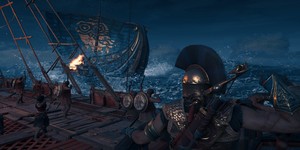
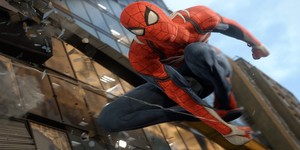






Want to comment? Please log in.